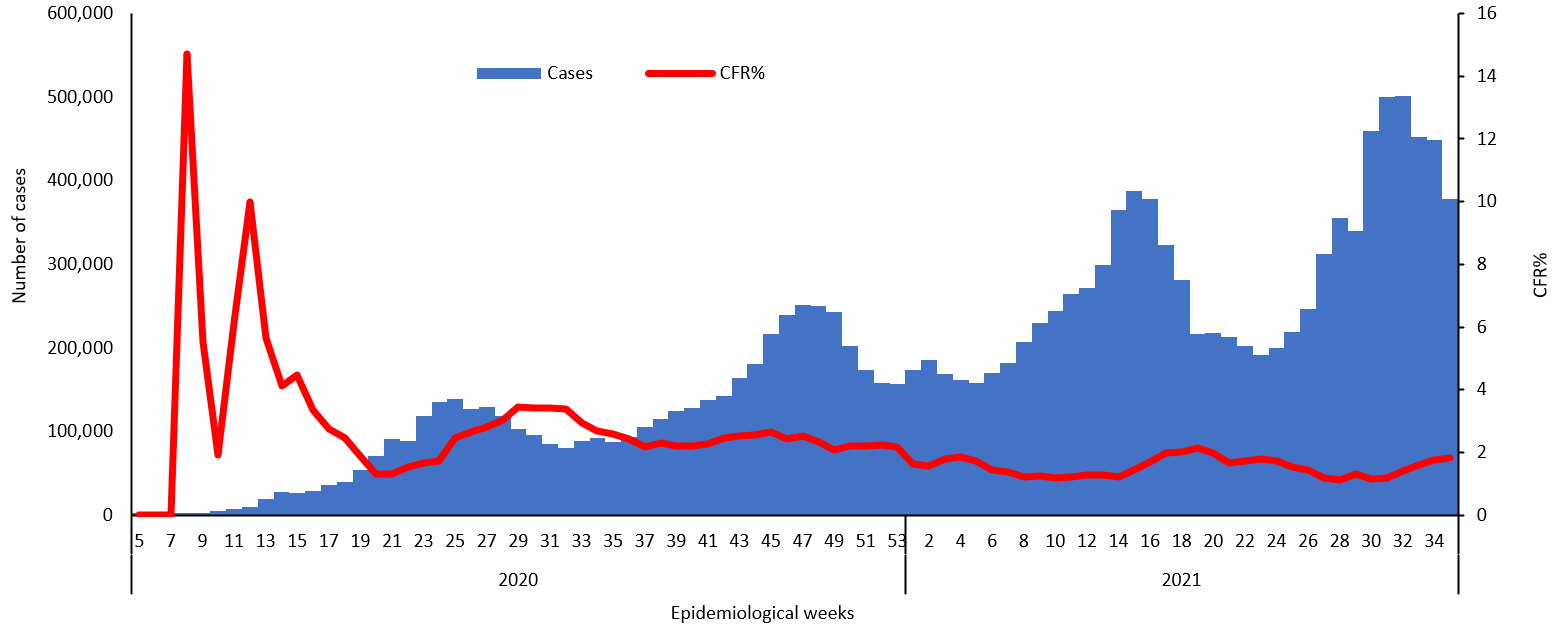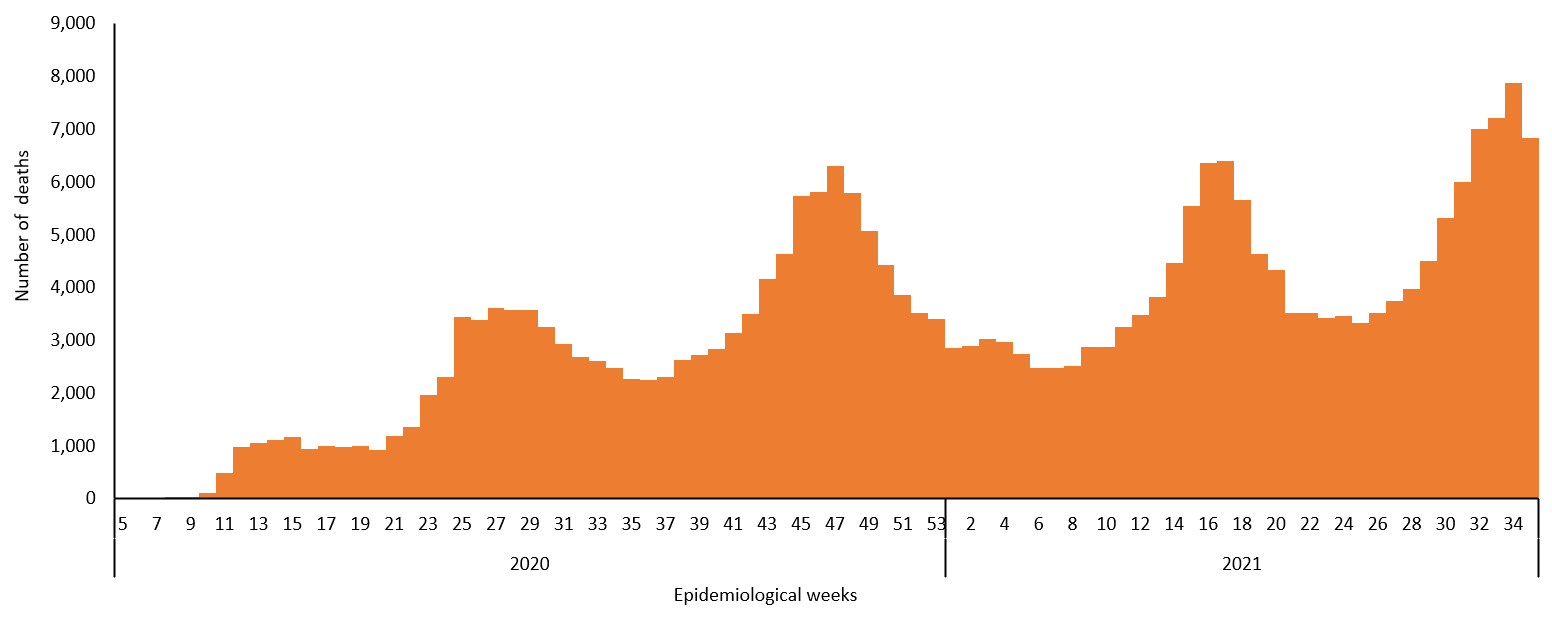The coronavirus disease COVID-19 continues to spread at the regional and global levels. As of 4 September 2021, the global cumulative incidence reached 219 061 412 reported cases and 4 522 640 associated deaths with a case fatality ratio (CFR) of 2.1%. Meanwhile, the 22 countries of the Eastern Mediterranean Region (EMR) have reported a total of 14 888 594 cases, which represent about 6% of the global count, with 271 502 associated deaths (CFR 1.8%). Most countries in the Region are in the community transmission phase.
Since the beginning of the outbreak, the country that has reported the highest number of total cases in the Region is Islamic Republic of Iran (5 103 537 cases; 34.3% of the Region’s total), followed by Iraq (1 912 395; 12.8%) and Pakistan (1 179 305; 7.9%). Islamic Republic of Iran also reported the highest number of total associated deaths (110 064; CFR 2.2%) followed by Pakistan (26 175; CFR 2.2%) and Tunisia (23 846; CFR 3.5%). The highest CFRs were reported by Yemen (18.9%) followed by Sudan (7.4%), while the lowest CFRs were reported by Qatar (0.26%), United Arab Emirates (0.28%) and Bahrain (0.51%).
During epidemiological week 35, the Region reported a decrease in cases of 15.7% when compared to the previous week (377 836 cases compared to 448 165 cases). Similarly, a decrease of 13.2% was observed for associated deaths (6842 deaths compared to 7879 deaths).
Occupied Palestinian territory, Islamic Republic of Iran, and Yemen reported a relative increase in COVID-19 activity in week 35. The cumulative number of cases increased from 365 009 to 381 222 in occupied Palestinian territory (a 4.4% weekly increase), from 4 895 448 to 5 103 537 in Islamic Republic of Iran (a 4.3% weekly increase) and from 7751 to 8056 in Yemen (a 3.9% weekly increase). Morocco, Yemen, and Islamic Republic of Iran had the largest relative increase in deaths.
In terms of testing, a total of 215 995 905 laboratory PCR tests were conducted since the start of the outbreak across the Region including 5 041 057 tests in week 35, which shows an 3.4% decrease compared to the previous week when 5 218 402 tests were conducted. The highest number of PCR tests were reported from United Arab Emirates (75.9 million), followed by Islamic Republic of Iran (29.3 million) and Saudi Arabia (27.7 million). The United Arab Emirates and Bahrain are performing the highest rates of testing per capita (7599/1000 and 3434/1000, respectively). The average positivity rate for the Region is 6.9%. WHO recommends a positivity rate of around 3–12% as a general benchmark indicating adequate testing, which was achieved in most countries of the Region.
Meanwhile, COVID-19 vaccination continues across the Region. The total number of doses administered so far in the 22 countries is 224 008 381. Pakistan has administered the highest number of doses at 59 384 758, followed by Saudi Arabia at 38 069 314 and Morocco at 34 640 535. On the other hand the total number of administrated doses in Libya is 1 130 485, in Sudan is 829 682, in Yemen is 311 483, in Somalia is 295 107, in Syria is 108 276 and in Djibouti is 60 141.*
Supporting countries in the Region
The regional incident management support team continues to coordinate the response and provide technical support to countries and partners in the Region in the areas of coordination and partnership, surveillance, laboratory capacity, clinical management, infection prevention and control, risk communication and community engagement, points of entry according to the International Health Regulations (2005), research, health systems, and essential health services among others.


For more data from the Region, please visit the COVID-19 dashboard.
*The data on vaccination is obtained from a number of sources including media reports and country websites for ministries of health.
Subscribe to the monthly infectious hazard preparedness newsletter of WHO’s Health Emergencies Programme for latest data and analysis on epidemic- and pandemic-prone diseases, as well as news on outbreak preparedness and response within WHO’s Eastern Mediterranean Region.




